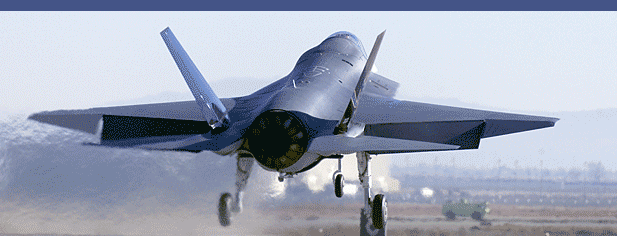
4/5th Generation Fighters News

F-35A Makes First Flight
12/15/2006
The first production Lockheed Martin F-35A Lightning II flew Dec. 15, initiating a six-year, 12,000-hour flight test program involving 15-20 airplanes.
Company officials say the 32-min. flight, which originated and terminated at Lockheed Martin facilities at NAS Joint Reserve Base Fort Worth, went as planned. "The Lightning II performed beautifully," said Jon Beesley, F-35 chief test pilot. After takeoff Beesley flew the airplane to an altitude of 15,000 ft. and performed a series of maneuvers to check handling qualities and throttle response of the Pratt & Whitney F135 engine. Two F-16s and one F/A-18 flew as chase aircraft during the flight.
The single-engine, single-seat fighter encountered no problems, according to company officials. At least one additional flight is planned for this month, followed by about six flights per month during the first half of 2007, according to Doug Pearson, vice president of the Lightning II's Integrated Test Force.
Pearson says the F-35's airframe systems are highly integrated, and the airplane features a myriad of advanced systems not found on any legacy fighter. These include the installation of electrohydrostatic flight control surface actuators that combine hydraulic and electrical functionality in one compact unit, and a new, "intelligent" electrical system with multiple redundancies. Although the F-35 will carry a powerful array of sensors to identify, track and strike enemy air and ground targets, none of these systems were installed in the first production aircraft.
Prior to the flight, Beesley had taxied the Lightning II under its own power for the first time on Dec. 7, accelerating up to 30 kt. to evaluate brake systems and nose wheel steering. On Dec. 12 subsequent tests were conducted at 80 kt. and 110 kt. on the runway to ensure proper operation of the antiskid system. Engineers spent Dec. 13 examining telemetry from the tests and assessing operation of the airplane's air data system.
In related news about the Joint Strike Fighter program, Deputy Defense Secretary Gordon England, the UK's Minister for Defense Lord Drayson, and Ward Elcock, Canadian Deputy Minister of National Defense, this week signed a memorandum of understanding to begin future cooperation in production, testing, training and sustainment as well as follow-on development of the F-35. The MOU expands cooperation beyond the current System Development and Demonstration phase.
The Netherlands signed in November, and five other countries are expected to sign the MOU by the end of the year, according to the Defense Dept. Italy will sign in January, and Turkey plans to join the production and support phase of the program
source: By Ed Phillips/Aviation Week & Space Technology
(29.12.2006)
|